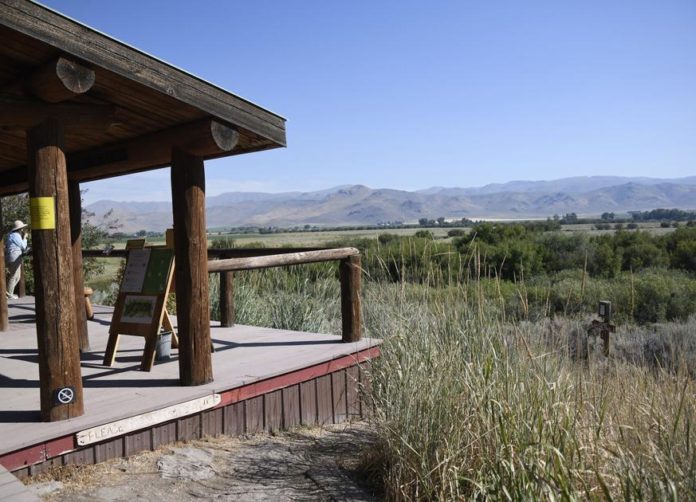Hit by high water temperatures, historically low flows and ongoing drought, the Silver Creek Preserve has reported an increase in physiological stress to its trout.
If less-than-ideal water conditions persist through the next few weeks, The Nature Conservancy, which owns the preserve, may need to consider rolling closures to fishing, according to Erika Green Phillips, watershed manager and aquatic ecologist for the organization. But that’s a last-resort option, Phillips said.
“We’re not in ‘alarm mode’ just yet, but we are concerned about the low dissolved-oxygen levels we’re seeing overnight and in the morning, and elevated temperatures in the afternoon,” Phillips said. “It’s a perfect storm of poor conditions for [the fish].”
Recent data collected at the U.S. Geological Survey’s gauge station on Silver Creek illustrate some of those conditions. From July 27 to Aug. 10, for example, the creek hit its lowest-ever-recorded flows for each of those days. During the first week of August it flowed at about 47 cubic feet per second—far below its average for that same time period of 125 cfs.
Water conditions and fish stress
Though not directly tied to the Big Wood River, Silver Creek depends on flows from the river to recharge the Wood River Valley aquifer, which then feeds springs that give rise to the creek.
But groundwater levels have dropped in the aquifer due to low winter snowpack, dry weather and increased irrigation demand. Add in warm temperatures, Phillips said, and the outcome is ‘a lot’ of stressed fish.
“When you have ongoing drought in the area combined with high temperatures, that affects the amount of water flowing into the creek,” she said. “You’ll see a lot more evaporation and sun exposure at unshaded sections of the fishery, which further raises the water temperature.”
Phillips said rainbow and brown trout become stressed and less likely to feed as water temperatures climb between 65 and 70 degrees. Seemingly small differences matter, too—from Aug. 1-10, the mean temperature hovered around 67 degrees, 3 degrees above the average for that time period.
Gasses—including oxygen—dissolve better in water at colder temperatures. Phillips said sustained water temperatures in the mid to high 60s are the threshold at which fish will start to experience physiological stress because not as much oxygen can be dissolved at higher temperatures.
However, she said, counter to popular assumption, nights and mornings are the toughest on trout.
“Algae and plants have grown like crazy. While this can be positive in some ways—they give more cover to fish—the plants also absorb oxygen at night, instead of putting it back into the water like they do during the day,” she said.
In partnership with the Silver Creek Alliance, The Nature Conservancy monitors dissolved oxygen levels, temperatures and flow rates around the clock at various points around Silver Creek. If any numbers consistently give off red flags, Phillips said, the preserve can institute temporary fishing access restrictions from 10 p.m. to 10 a.m., as it did in 2014.
“The idea of that closure was to take some of the stress and pressure off the fish so they only really had natural biological stressors, a gesture of goodwill for them,” she said.
Anecdotal reports from anglers such as dead-fish sightings may also lead the conservancy to institute a closure, which would be announced by a press release and outdoor signs.
“We would let the public know through several channels,” Phillips said.
She added that an increase in fly fishing tourism at the preserve has put additional stress on the fishery.
“We’re seeing a lot of people coming out,” she said. “There’s definitely additional pressure on the fish.”
Credit: Source link






























